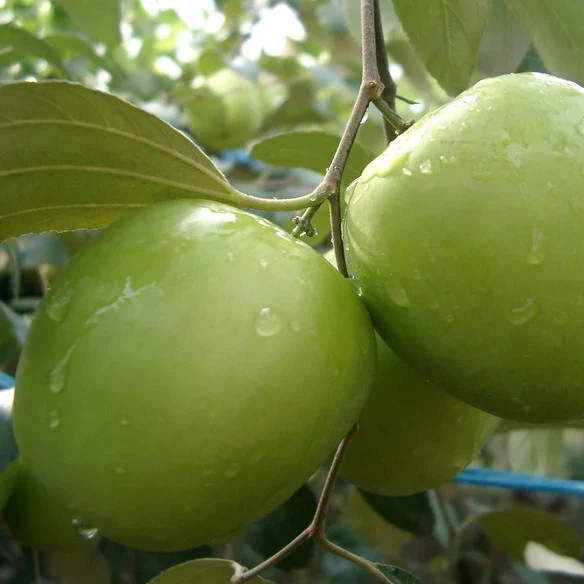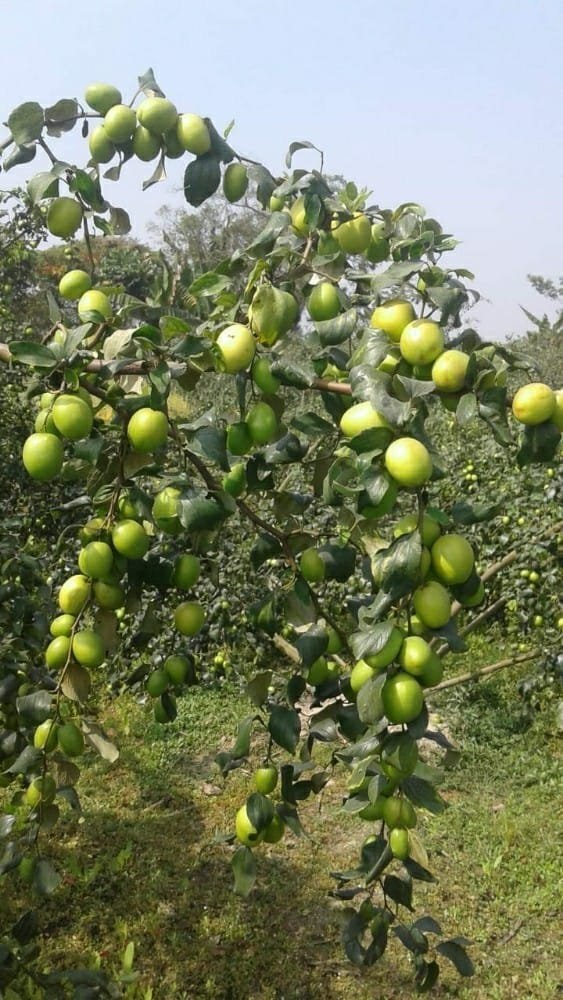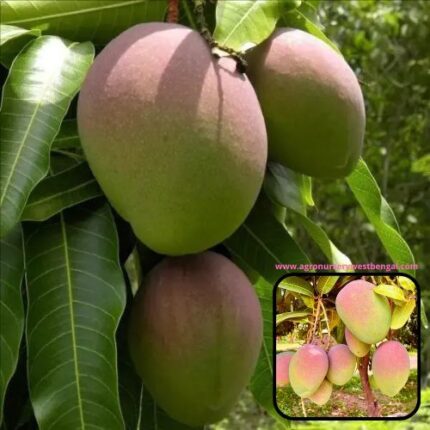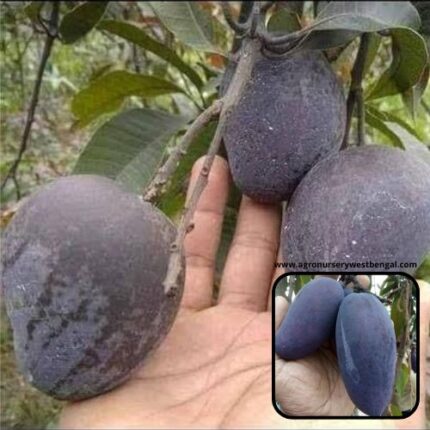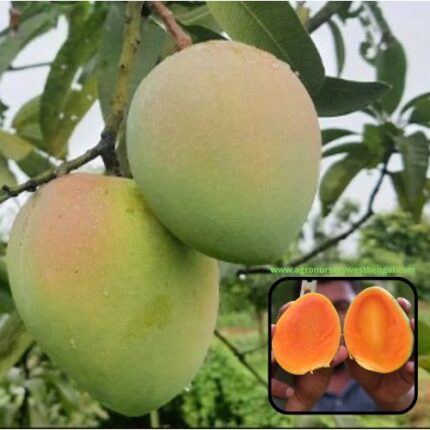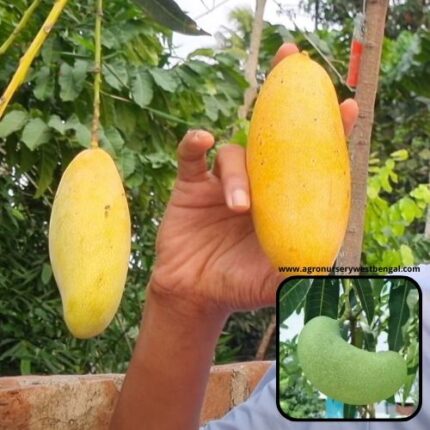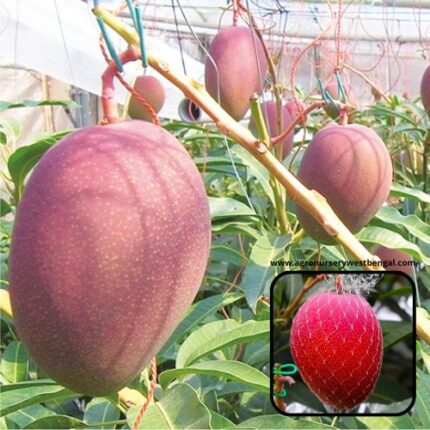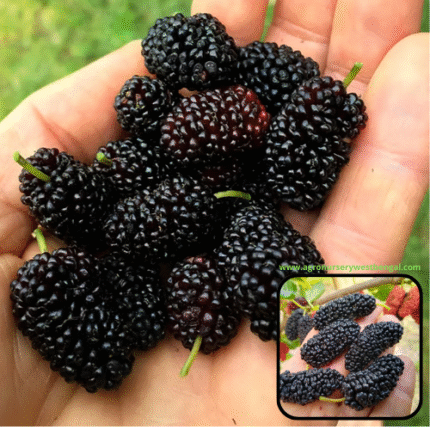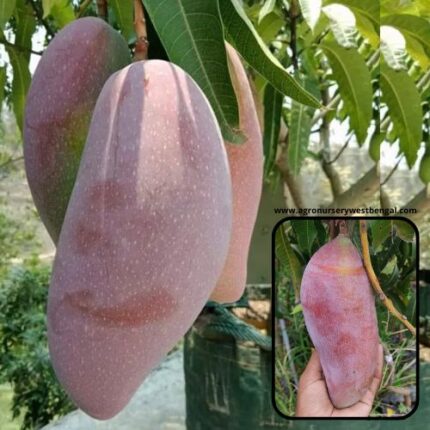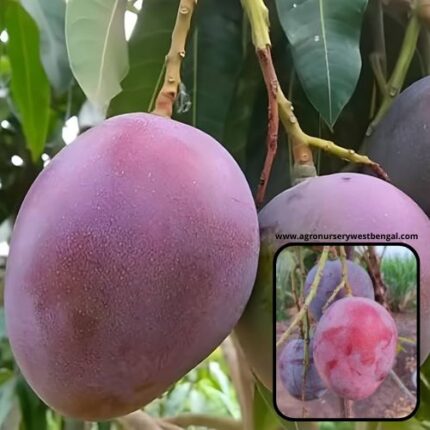

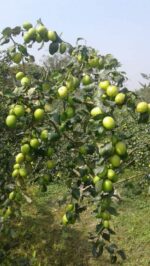
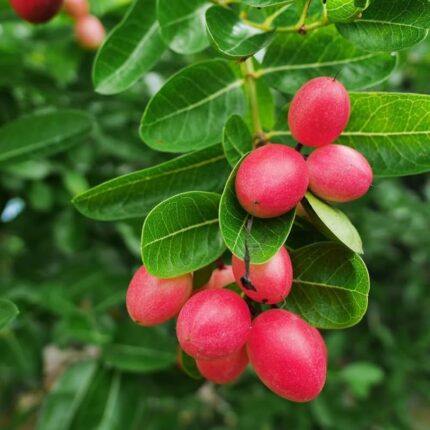
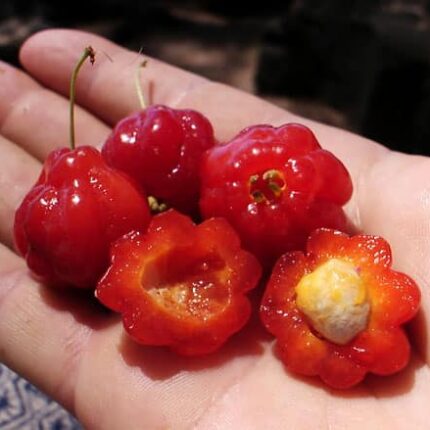
Green apple ber fruit plants
₹599 Original price was: ₹599.₹349Current price is: ₹349.
“Green Apple Ber” refers to a specific variety of the Indian Jujube (Ziziphus mauritiana), often specifically a Thai variety, that has gained significant popularity due to its fruit’s resemblance in taste and texture to a green apple.
Here’s a detailed description:
What is “Green Apple Ber”?
It’s a cultivated variety of the Indian Jujube (also known as Chinese Date or Indian Plum), specifically bred or selected for certain desirable characteristics. The “Green Apple” part of the name comes from its appearance and taste, which are reminiscent of a green apple.
Key Characteristics of the Fruit:
- Appearance: The fruit is typically round to oval in shape, often larger than traditional wild ber varieties. As the name suggests, it maintains a vibrant green color even when ripe, though some varieties might turn slightly yellowish as they fully mature. The skin is smooth, glossy, and thin.
- Taste and Texture: This is where it really earns its name. The flesh is notably crisp and juicy, much like a fresh green apple. It has a delightful sweet-tart flavor, which is generally sweeter than the more astringent taste of some native ber varieties. When slightly underripe, it can be a bit more tart and crunchy.
- Size: Fruits are often larger than wild ber, ranging from 70-100 grams or more per fruit, contributing to its commercial appeal.
- Seed: While often marketed as “seedless,” many varieties of green apple ber do contain very small, inconspicuous seeds that are barely noticeable when consumed.
Description of the Plant (Ziziphus mauritiana):
The “Green Apple Ber” plant shares the general characteristics of its parent species, Ziziphus mauritiana:
- Growth Habit: It’s a spiny, evergreen shrub or small to medium-sized tree. It can grow anywhere from 2 to 15 meters (6 to 50 feet) tall, often with a spreading crown and gracefully drooping, thorny branches. The branches can be zigzag in arrangement.
- Leaves: The leaves are typically small, oval to elliptic, with a glossy, deep green upper surface and often a paler, sometimes slightly fibrous or fuzzy underside. They are arranged alternately on the branches.
- Flowers: Small, inconspicuous, yellowish-green flowers bloom in clusters along the leaf axils. These flowers are usually mildly fragrant and attract pollinators like bees.
- Hardiness and Adaptability: Ziziphus mauritiana is renowned for its resilience. It’s highly drought-tolerant and thrives in warm, dry, tropical to subtropical climates. It can grow in a wide range of soils, including less fertile or rocky ones, as long as they are well-drained. It shows good tolerance to salinity and even some waterlogging.
- Fruiting: Green Apple Ber plants are often early bearers, with grafted plants potentially starting to fruit within 1.5 to 3 years. Fruits ripen generally from July to September in many parts of India, though the blooming and fruiting periods can vary slightly depending on the specific climate and region.
Cultivation:
- Propagation: Green Apple Ber is commonly propagated through grafting to ensure the desired fruit characteristics.
- Sunlight: Requires ample direct sunlight for optimal fruit production (at least 6 hours daily).
- Pruning: Regular pruning is essential to maintain a manageable shape, encourage new growth, and maximize fruit yield, as fruits are borne on new shoots.
Uses and Benefits:
- Fresh Consumption: The primary appeal is eating the fruit fresh due to its crisp texture and appealing sweet-tart taste.
- Culinary Uses: Like other ber varieties, it can be used in pickles, jams, jellies, and chutneys.
- Nutritional Value: Green Apple Ber is a low-calorie fruit packed with dietary fiber, vitamins (especially Vitamin C and A), and minerals like potassium, iron, and phosphorus. It also contains beneficial antioxidants.
- Health Benefits: Contributes to digestive health, boosts immunity, supports heart health, may help regulate blood sugar, and has anti-inflammatory properties.
In summary, the “Green Apple Ber” is a desirable variety of Indian Jujube that stands out for its large, crisp, juicy, and sweet-tart fruits, making it a popular choice for fresh consumption and a valuable addition to tropical and subtropical gardens

